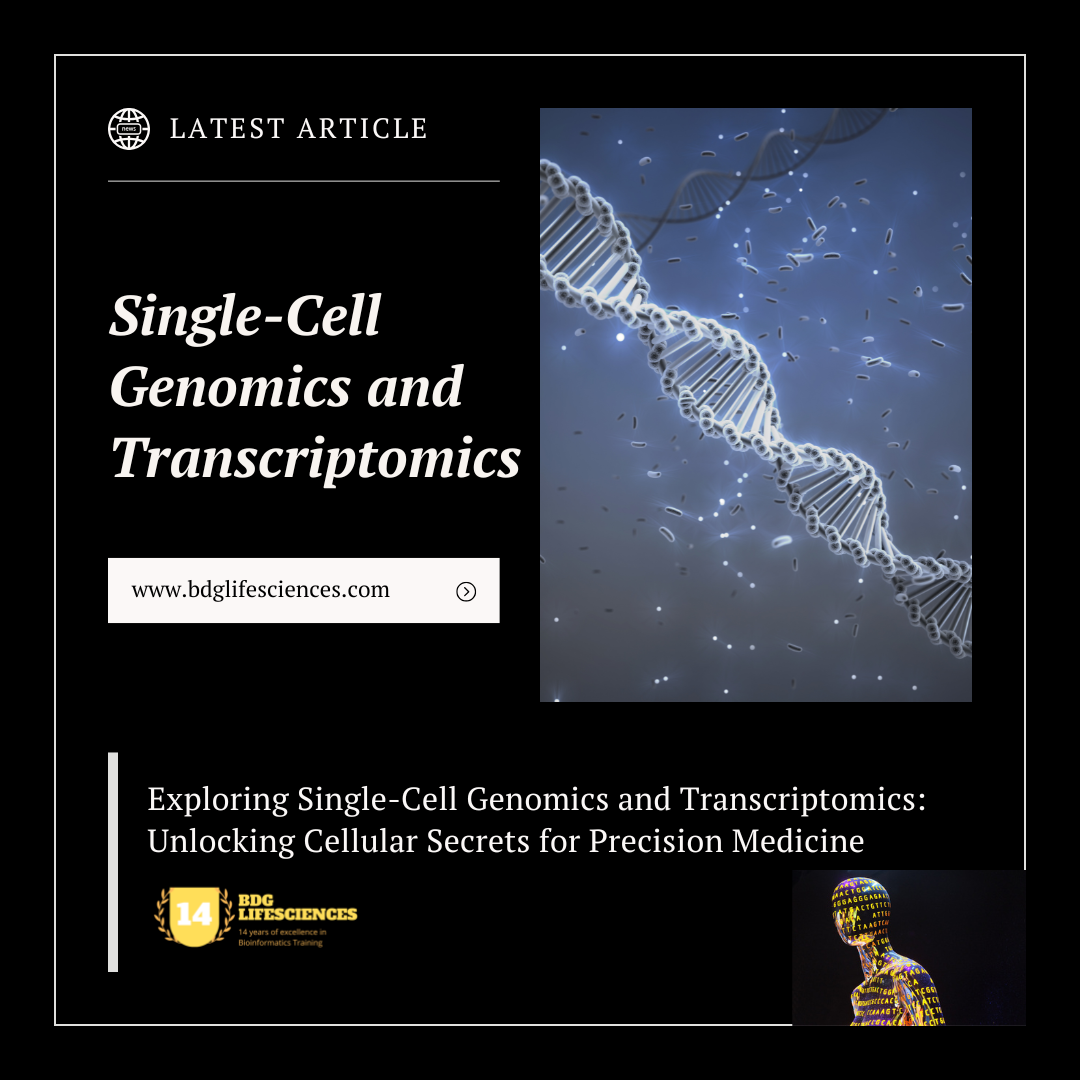
Blog

10 Nov , 2024
Single-Cell Genomics and Transcriptomics are transforming our understanding of biology by allowing researchers to explore the genetic and transcriptomic makeup of individual cells. This revolutionary approach has opened up new avenues for studying cellular heterogeneity, disease progression, and cellular functions that were previously undetectable with bulk analysis methods. By focusing on individual cells, researchers can identify rare cell types, track cell lineages, and unravel complex cell behaviors in development, immunity, cancer, and beyond.
A Brief History and Importance of Single-Cell Genomics
The field of single-cell genomics emerged in response to the limitations of traditional bulk sequencing methods, which average out data across thousands or millions of cells. As early as the 1980s, scientists explored ways to analyze DNA from single cells, but advances in next-generation sequencing (NGS) and microfluidics in the 2000s finally made it possible to profile individual cells at a large scale. Today, single-cell genomics has become a cornerstone of modern biology, providing insights that are reshaping areas like developmental biology, cancer research, and regenerative medicine.
The Difference Between Single-Cell Genomics and Transcriptomics
Together, these techniques provide a comprehensive view of cellular identity and function at an unprecedented resolution.
Emerging Techniques in Single-Cell Analysis
The rapid development of single-cell technologies has given rise to a variety of innovative tools and methods:
Droplet-based Single-Cell RNA Sequencing (scRNA-seq): Uses microfluidic devices to isolate single cells into droplets for sequencing. This method is highly scalable and allows for the profiling of thousands of cells simultaneously.
Single-Cell ATAC-seq: Measures chromatin accessibility to identify regulatory elements in the genome. This technique provides insight into gene regulatory networks by analyzing regions of open chromatin within individual cells.
Spatial Transcriptomics: Combines gene expression analysis with spatial information, enabling researchers to map gene expression patterns within tissues. This technique helps in understanding the spatial organization of cells and how it affects function.
CRISPR-based Perturb-seq: Integrates CRISPR technology with scRNA-seq to observe gene function at a single-cell level by perturbing specific genes. This allows researchers to investigate causal relationships between genes and cell behaviors.
Data Analysis Challenges in Single-Cell Genomics and Transcriptomics
While single-cell techniques provide valuable insights, they also present unique data analysis challenges:
Applications of Single-Cell Genomics and Transcriptomics in Disease Research
The impact of single-cell technologies spans various fields, from understanding immune responses to uncovering cancer heterogeneity:
Cancer Research Single-cell genomics allows researchers to dissect tumor heterogeneity by identifying diverse subpopulations within a tumor. This is particularly valuable in precision oncology, as it enables the identification of drug-resistant clones and provides insights into how cancers evolve and respond to treatment.
Neuroscience The brain is composed of numerous specialized cell types, each with unique functions. Single-cell transcriptomics helps scientists map cell types in the brain, leading to a better understanding of neurological diseases like Alzheimer’s and Parkinson’s.
Immunology Immune responses are highly dynamic, with various immune cell types responding differently to pathogens. Single-cell technologies enable researchers to track immune cell behavior, providing insights into autoimmune diseases, allergies, and vaccine responses.
Developmental Biology By studying individual cells at various stages of development, researchers can map cell lineage trajectories, understanding how a single fertilized egg develops into a complex organism. This has broad implications for regenerative medicine and stem cell research.
Recent Discoveries Enabled by Single-Cell Analysis
Recent studies have highlighted the power of single-cell genomics and transcriptomics in revealing novel insights:
Challenges and Limitations of Single-Cell Technologies
Despite their power, single-cell technologies come with several limitations:
Ethical Considerations in Single-Cell Research
As single-cell technology advances, ethical considerations emerge:
Future Directions in Single-Cell Genomics and Transcriptomics
The future of single-cell analysis holds exciting possibilities:
Conclusion
Single-cell genomics and transcriptomics are rapidly advancing our understanding of cellular diversity and complexity. By providing unprecedented insights into individual cells, these technologies are reshaping biomedical research and paving the way for precision medicine. Although challenges remain in data analysis, cost, and technical noise, the continued development of single-cell methods promises to unlock new discoveries in health and disease. As we look to the future, single-cell analysis will likely become even more integrated with other technologies, creating a multidimensional view of biology that holds transformative potential for science and medicine.
